
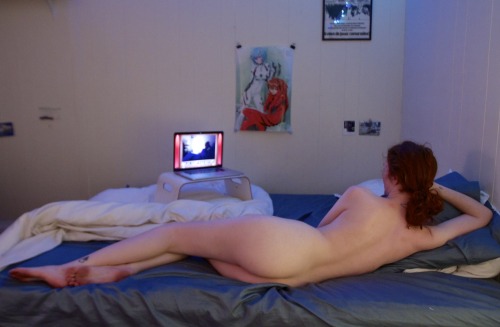
Rokeby Venus by Valezquez, Audrey Wollen
Daria NifontovaКакой классный материал, и очень честный — особенно у последней девушки. Tricky business, eh
 Photo: Courtesy of Liberty Tillemann-Dick.
Photo: Courtesy of Liberty Tillemann-Dick.  Photo courtesy of Kelsey Osgood.
Photo courtesy of Kelsey Osgood. Illustrated by Elliot Salazar.
Illustrated by Elliot Salazar. Illustrated by Elliot Salazar.
Illustrated by Elliot Salazar. Photo: Courtesy of Karen Hunt-Ahmed.
Photo: Courtesy of Karen Hunt-Ahmed. Illustrated by Elliot Salazar.
Illustrated by Elliot Salazar. Illustrated by Elliot Salazar.
Illustrated by Elliot Salazar. Photo: Courtesy of Liberty Tillemann-Dick.
Photo: Courtesy of Liberty Tillemann-Dick.  Illustrated by Elliot Salazar.
Illustrated by Elliot Salazar. Illustrated by Elliot Salazar.
Illustrated by Elliot Salazar. Photo: Courtesy of Edlyn Sammanasu.
Photo: Courtesy of Edlyn Sammanasu.  Illustrated by Elliot Salazar.
Illustrated by Elliot Salazar. Illustrated by Elliot Salazar.
Illustrated by Elliot Salazar. Photo: Courtesy of Tiffani Brooks.
Photo: Courtesy of Tiffani Brooks. Illustrated by Elliot Salazar.
Illustrated by Elliot Salazar. Illustrated by Elliot Salazar.
Illustrated by Elliot Salazar.Daria Nifontovawell thank god
 Photographed by Michael O’Neal.
Photographed by Michael O’Neal.
Jackie Nickerson
Lookbook Kane West x Adidas Original

Near to the Wild Heart by Clarice Lispector
What: A feverish, Joycean first novel that flicks back and forth through the life and memories of an irrepressibly wild and mostly amoral young woman named Joana.
Why: Lispector burst onto the Brazilian literary scene at a mere 23 years old with this incendiary novel, which earned her the title "Hurricane Clarice." It remains one of the most important modernist works ever written, full of shuddering power and unfiltered emotion.

Krik? Krak! by Edwidge Danticat
What: MacArthur Genius Grant winner Edwidge Danticat's first collection of short stories, mostly set in Haiti.
Why: In these stories, Danticat investigates the relationships women create — particularly those between mothers and daughters — and the struggles her characters face as they attempt to reconcile their pasts with their futures. Her prose is warm and inviting, even as she describes extreme suffering. The result is something uncommonly effective, no matter who you are.

Dear Life by Alice Munro
What: The most recent collection of short stories by one of the greatest living practitioners of the craft.
Why: Munro has a rare talent that gives every one of her short stories the weight and punch of a novel, investigating the lives and loves of everyday people in a way that never fails to captivate. Plus, the lady won the 2013 Nobel Prize in Literature — and for someone who only writes in the short form, that's an even more impressive feat.

A Room of One's Own by Virginia Woolf
What: Woolf's famous 1929 book-length essay that investigates the plight of the female artist.
Why: Because Woolf is one of the greatest writers of all time, and because her essay, which argues for both physical and psychological space for women to create art, is still important today.

Beloved by Toni Morrison
What: A Pulitzer Prize-winning novel that tells the story of Sethe, an escaped slave, complete with ghosts of all kinds.
Why: Toni Morrison is a giant of American letters, and this book is her searing, striving, terrifying best.

Bluets by Maggie Nelson
What: Technically a lyric essay, this luminous little book is a deeply felt love letter to the color blue.
Why: This book is unlike anything else you'll ever read, investigating life, love, philosophy, suffering — and yes, all things blue — in short, eloquent paragraphs. It reads like an extended prose poem that will rock you to the core.

The Luminaries by Eleanor Catton
What: A dazzling, vivacious novel set during the New Zealand gold rush and revolving around a set of mysterious happenings.
Why: Catton has quickly become one of the most celebrated young writers working today, winning the Man Booker Prize at 28, making her the youngest recipient ever. All hype aside, this book, a monster at 864 pages, will lure you in and keep you hostage for hours.

The Year of Magical Thinking by Joan Didion
What: Didion's intimate memoir about the death of her husband and her daughter's illness.
Why: No list of recommendations for books by women — or indeed, any books — would be complete without a volume by Didion, our doyenne of the written word, a living legend. But, be warned: You won't get out of this book without at least one good cry.

A Tale for the Time Being by Ruth Ozeki
What: A complex novel that centers on the diary of a Japanese teenage girl who decides that the only way to cure her angst is to end her own life — but not before she documents the life story of her great-grandmother, a Buddhist nun.
Why: Not only is Ozeki's novel a great piece of storytelling, it also investigates the way stories shape and affect us — not to mention what it's like to be a woman, a storyteller, and part of a family in every stage of life.

Sleepless Nights by Elizabeth Hardwick
What: Part memoir, part novel, part scrapbook — all vivid sensory exploration of memory, personality, and experience.
Why: Hardwick was one of the most important critics and theorists of her time, and her most famous novel is still a unique creation — a piece of art that elevates quality of mind and language above all else.

Almost Famous Women by Megan Mayhew Bergman
What: Bergman's collection features fictional stories based on 13 real-life "almost famous" women — from dancer Butterfly McQueen to Allegra Byron, Lord Byron's daughter out of wedlock, to a pair of conjoined twins in Hollywood.
Why: Because what better time is there for celebrating the lesser-known heroines of our history, and reading some vibrant, generous short stories in the process?

The Liars' Club by Mary Karr
What: Memoirist and poet Mary Karr's first book tells the story of her roughshod childhood in a scummy Texas oil town, and is both hilarious and devastating.
Why: Karr's voice is like no other, and this year marks the 20th anniversary of this incendiary first memoir — so, if you've been dragging your feet, why? This book will knock you off them immediately.

My Brilliant Friend by Elena Ferrante
What: A portrait of two girls growing up together in a small town in Italy, from one of that country's most acclaimed writers.
Why: This is one of the best books about female friendship in recent memory — so what better book to read during Women's History Month? After all, we all get by with a little help from our lady friends.

I Feel Bad About My Neck: and Other Thoughts on Being a Woman by Nora Ephron
What: The hilarious Nora Ephron's slim book of essays about aging, and particularly, the plight of the aging woman.
Why: This book is solidarity, wit, and wisdom you can fit in right your pocket — no matter how old you are.

Tipping the Velvet by Sarah Waters
What: A compulsively readable novel about the Victorian-era music hall girls, in all their gender-bending, sapphic, passionate glory.
Why: It's a historical novel with plenty of seduction and sex and pretty much zero men — which can feel like a breath of fresh air in our male-dominated cultural landscape.

The Wife by Meg Wolitzer
What: In this novel's opening passages, the wife of a famous New York novelist decides to leave him. We find out, over the course of the novel, just exactly why.
Why: With this book, both a hilarious work of satire and a compelling novel in its own right, prepare to delight in Wolitzer's dry wit and keen sense of humanity, as well as consider the plight of the "literary wife" — or indeed, any wife.

Men We Reaped by Jesmyn Ward
What: Over a mere four years in Jesmyn Ward's life, five men close to her died — from accident, from overdose, from suicide — and spurred this memoir, which investigates the reasons behind the tragedies.
Why: The book is about family, poverty, hopelessness and hope, men and women, but also an essential read about race in America from one of our brightest young writers.

A Girl Is a Half-Formed Thing by Eimear McBride
What: A strange, beautiful work of contemporary modernism that won the 2014 Bailey's Women's Prize for Fiction.
Why: Too often, narratives by and about women that are both emotionally raw and formally inventive are ignored. This one, about a girl's relationship with her brother, was one of the best, and most difficult, books of last year — don't ignore it.

Girl in a Band by Kim Gordon
What: The brand-new memoir from Sonic Youth founder and front woman Kim Gordon.
Why: Kim Gordon is a living piece of kick-ass women's history, and she's written a book about how she got there. Need we say more?

The Woman Warrior by Maxine Hong Kingston
What: An innovative memoir that blends Kingston's experiences with traditional Chinese folktales.
Why: Kingston's book examines the nature of oppression, womanhood, and both American and Chinese identities. She writes: “There is a Chinese word for the female I — which is ‘slave.’ Break the women with their own tongues!"
So the young Kingston revolted against her gender: “I refused to cook. When I had to wash dishes, I would crack one or two. ‘Bad girl,’ my mother yelled, and sometimes that made me gloat rather than cry. Isn’t a bad girl almost a boy?”

Dora: a Headcase by Lidia Yuknavitch
What: A novel that centers on 17-year-old Ida, a fictionalized version of Freud's famous case study of "hysterical" bisexual Dora.
Why: Because Ida takes back the term "hysterical," and because we need more out-there portrayals of femininity in popular culture — for Women's History Month and every other. “I want to create new girl myths,” Yuknavitch said of her writing. Let's have lots more where this came from.

The Second Sex by Simone de Beauvoir
What: An essential feminist text that asks its readers to examine gender — and our preconceptions of it.
Why: When better than Women's History Month to investigate the nature of woman-ness, particularly as its been constructed in our culture? Plus, if you've never read this ur-text of feminism, it's about time.

Heroines by Kate Zambreno
What: An urgent, insightful book about “the mad wives of modernism,” both historical and fictional, “who died in the asylum. Locked away, rendered safe. Forgotten, erased, or rewritten.”
Why: For reading in opposition to suppression of all kinds.

The Bloody Chamber by Angela Carter
What: Sexy, feminist retellings of classic fairy tales.
Why: Did you read the "what"?

The Golden Notebook by Doris Lessing
What: Lessing's influential postmodern masterpiece follows writer Anna Wulf, who keeps an account of each strand of her life in a separate notebook — "a black notebook which is to do with Anna Wulf the writer; a red notebook concerned with politics; a yellow notebook, in which I make stories out of my experience; and a blue notebook which tries to be a diary." — and weaves these in with another separate fictional account of Anna.
Why: Because this book is an antisocial, feminist touchstone, and Doris Lessing was a complete badass. Also, it will make you smarter.

Men Explain Things to Me by Rebecca Solnit
What: A slim book that takes on female self-doubt and our cultural gender gap via the all-too-prevalent trend of men explaining things to women that they assume — wrongly — women don’t understand.
Why: Women’s history includes the history of mansplaining. Solnit will help you battle it.

Wide Sargasso Sea by Jean Rhys
What: Rhys’ famous postcolonial prequel to Jane Eyre investigates race, cultural displacement, and the trope of the “madwoman in the attic.”
Why: History is full of madwomen in attics, in all their various permutations, but any investigation of the concept’s literary scope has to start here.

The Secret History of Wonder Woman by Jill Lepore
What: A book exploring the complex origin and history of the most popular female superhero ever invented.
Why: Because even fictional women deserve to be remembered during Women’s History Month — especially if that fictional woman is as badass and ubiquitous as Wonder Woman.

The Handmaid's Tale by Margaret Atwood
What: Atwood’s vision of a future, religion-dominated America in which women are relegated to status symbols or slaves for procreation.
Why: Because the first step in keeping anything like this from happening is to start thinking about it. Also, because this book is incredible.

We Should All Be Feminists by Chimamanda Ngozi Adichie
What: A rallying cry of an essay (and the one sampled by Beyoncé) with a message true to its title.
Why: Because we really should.

Like this post? There's more. Get tons of entertainment news, celebrity updates, and cat videos on the Refinery29 Entertainment Facebook page. Like us on Facebook — we'll see you there!
Daria Nifontovafor real tho
do you think nut companies whose nuts are given out on planes are highly respected in the nut community or are they like the losers
i believe in hate at first sight

I’m screaming at “the BEST Journey songs OF ALL TIMES”
this is 99.9% of the white dads I’ve met in my lifetime
that is frightening
Daria Nifontovahe put nap in Napier

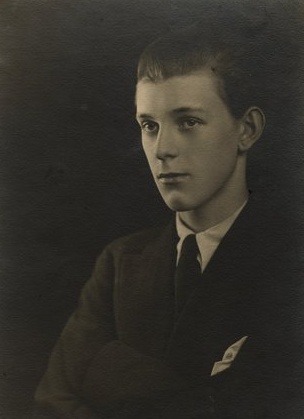

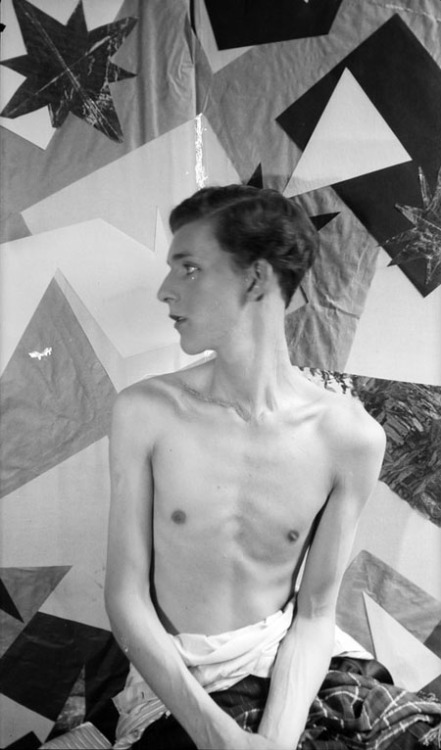

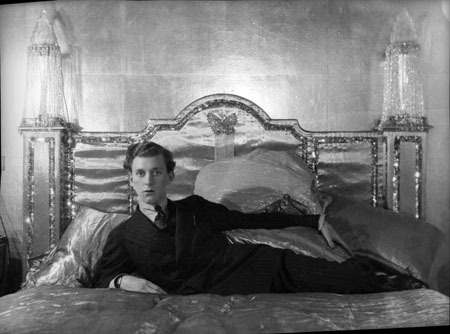

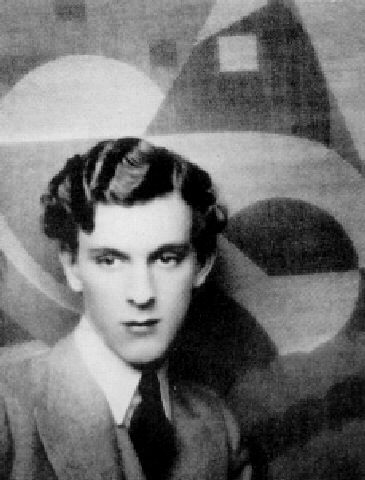
Stephen James Napier Tennant (21 April 1906 – 28 February 1987) was a British aristocrat known for his decadent lifestyle. It is said, albeit apocryphally, that he spent most of his life in bed. Stella Tennant’s Gran uncle
Daria Nifontovaэто офигенно
 Photographed by Davide Luciano.
Photographed by Davide Luciano. Photographed by Davide Luciano.
Photographed by Davide Luciano. Photographed by Davide Luciano.
Photographed by Davide Luciano. Photographed by Davide Luciano.
Photographed by Davide Luciano. Photographed by Davide Luciano.
Photographed by Davide Luciano. Photographed by Davide Luciano.
Photographed by Davide Luciano. Photographed by Davide Luciano.
Photographed by Davide Luciano.Daria NifontovaWell this is the beginning of the end.
Daria Nifontovaдичайше мечусь между первыми и вторыми

Juno and any other subsequent winter storms are nothing to Anya Lyagoshina. She's from Siberia; she's used to it. "I loved it when it was cold," she says, "because they'd cancel school, and we'd just stay inside all day." Snow days are nice and all, but staying out of the sun can make people...cagey. Or pale at the very least. Anya has a solution for this, too: Drawn-on freckles.
To be fair, Anya's face already has a head start with a smattering of very cute specks. "I hated my freckles in school," she says. "People around me didn’t have freckles—I got them from my mom—so I would use lemon juice and things to try and bleach them out. I was 12! Obviously it didn’t work, so I stopped. Now at the shoots, they’ll add more. So they’ll do skin and eyebrows and more freckles with a eye or lip pencil that’s the same tone as my freckles."
Sounds like instant summer to us, so we handed her the MAC Veluxe Brow Liner in Brunette and demanded (nicely) a tutorial. With the dull-ish pencil, she dotted her face with a little swivel action—over her nose and on the apples of her cheeks—and patted down the color gently with her fingers. Swivel, swivel, swivel. Pat, pat, pat...until desired coverage is reached. Now your face should match your sunny disposition, despite the forecast.
Anya Lyagoshina (The Society) in YSL Volupte Sheer Candy Glossy Balm in 01 Lush Coconut, MAC Veluxe Brow Liner in Brunette, Kjaer Weis Mascara in Black, Topshop Cheek Jelly in Museum. Photographed by Tom Newton.
The post Anya Lyagoshina’s Fake Freckles appeared first on Into The Gloss.
Daria Nifontovaскриншоты голосовых звонков
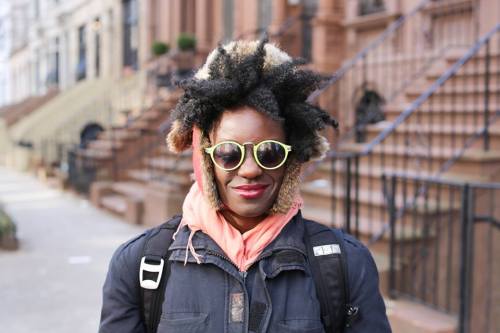
"I want to be in action movies. I want to kick a lot of ass. But not in an overly sexualized way."
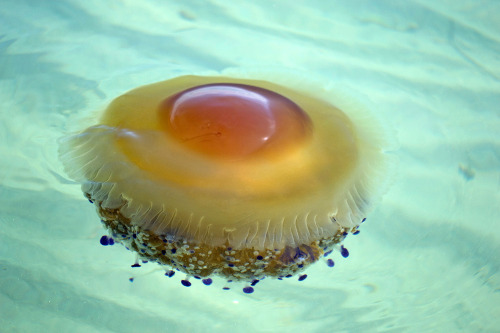

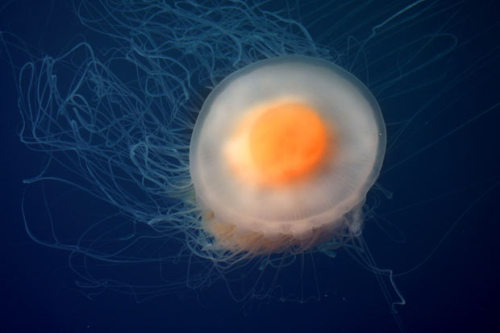




crumbFried Egg Jellyfish Are Kind of Adorable – & That’s No Yolk.
There are two species that hold the whimsical title of “Fried Egg Jellyfish”: Phacellophora camtschatica and Cotylorhiza tuberculata though the two are quite different from each other in all aspects beside appearance.Phacellophora camtschatica is a huge jelly that prefers colder waters. It’s bell can reach up to 2 ft across and its dozens of tentacles reach over 20 ft long! If you don’t think this floating egg creature looks very menacing, you’d be right. It has a very weak sting and many small crustaceans take advantage of the jelly by riding on its bell (breakfast to go…?) while snatching up extra food.
Cotylorhiza tuberculata is a much smaller jellyfish that hangs out in warmer waters. It only reaches about 35 cm in diameter, so don’t go for this Fried Egg Jelly if you want a big breakfast. Unlike most jellyfish, C. tuberculata can swim on its own, without relying on the currents for movement. It’s sting (if you can even call it that) is so feeble that it has very little to no effect on humans at all. I mean, it does look like a breakfast food, after all… how powerful could it be?